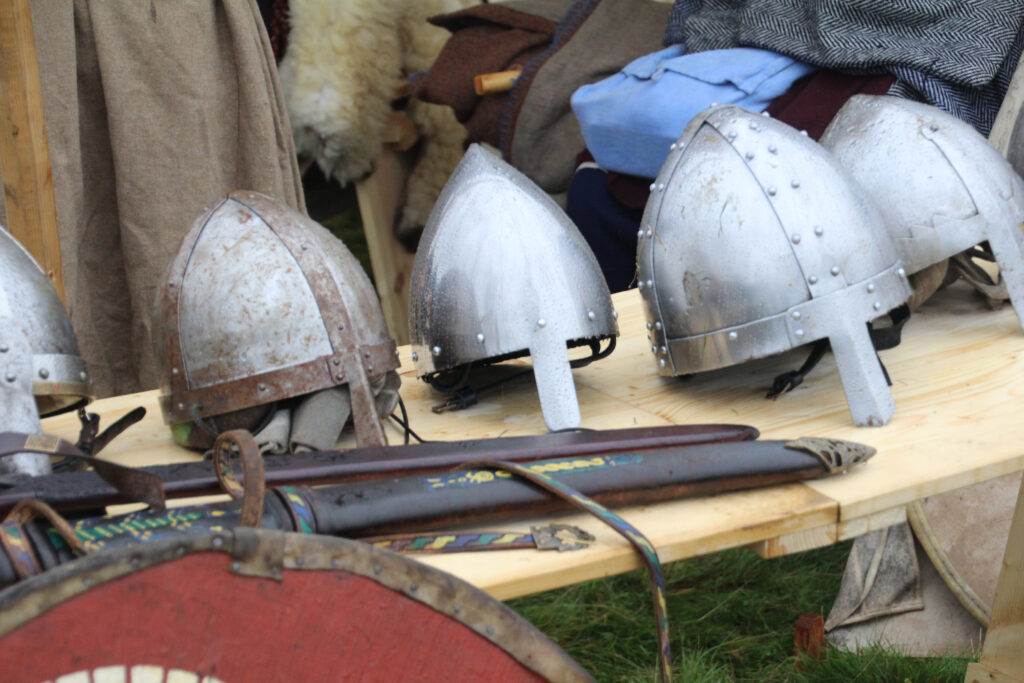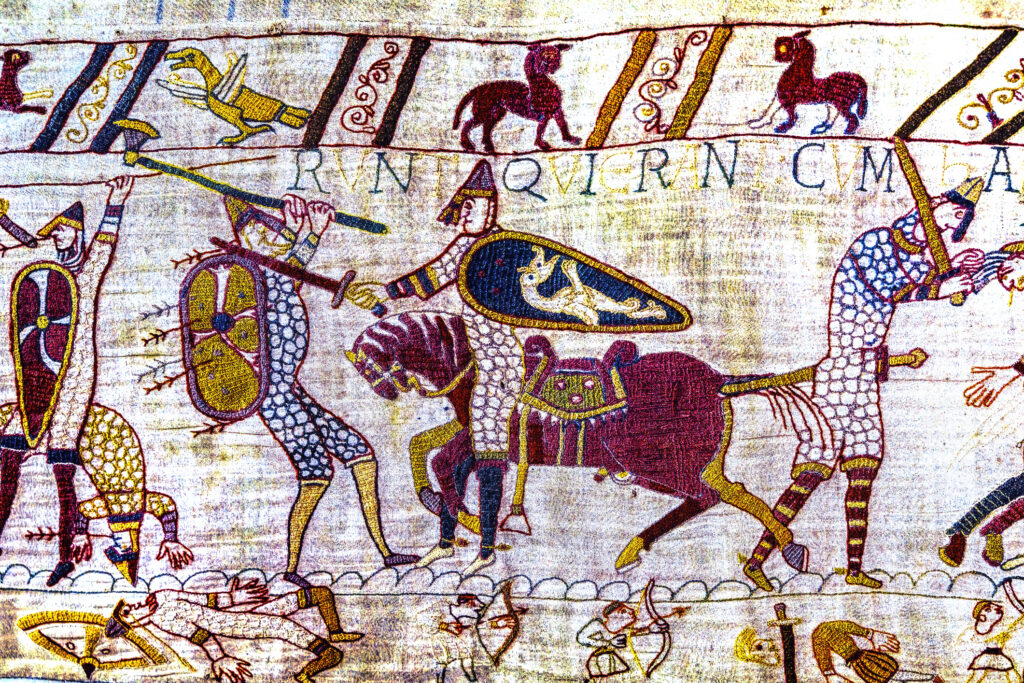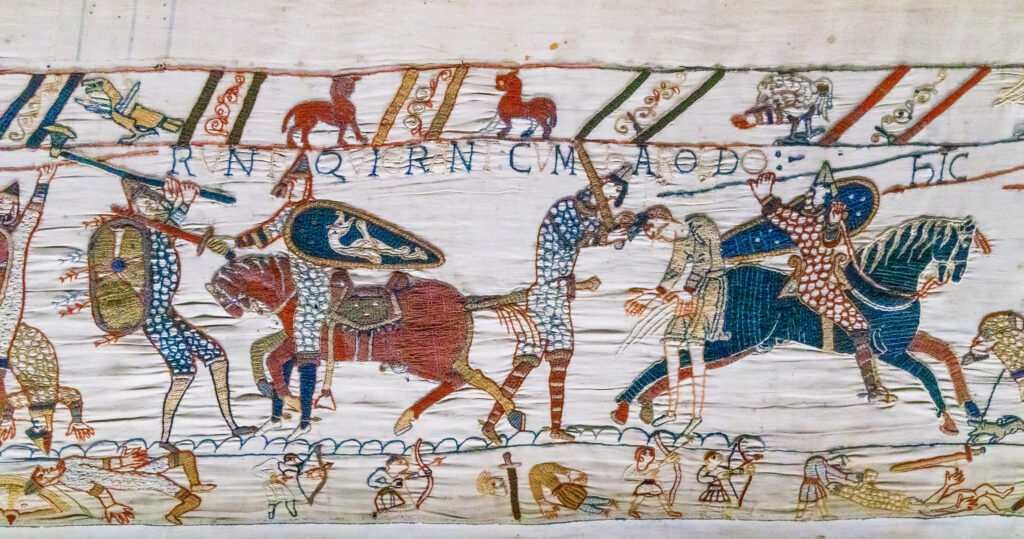Think you know all there is to know about the Battle of Hastings? Think again. Even after 900 or so years, this history-defining conflict continues to throw up some incredible stats, facts and nuggets of intrigue – some of which you may never heard before.
So, what’s left to unearth when it comes to the legendary events of 1066 that we haven’t already covered in our complete guide to the Battle of Hastings? Let’s find out…
History rewritten: The significance of the Norman Conquest
When it comes to lesser-known facts about the Battle of Hastings, the legacy of the Norman Conquest itself is a good starting point. Many people fail to realise the defining impact that the Normans had on the trajectory of Britain, altering the course of the country for generations to come.
Honestly? It’s almost impossible to define the scale of the impact that the Norman Conquest had on Britain. Indeed, when William The Conqueror sailed across the English Channel on 28 September 1066, even he probably couldn’t comprehend the significance of the moment – with the influence of his ensuing invasion still evident across the UK today.

So, how exactly did the Normans transform the history and fortunes of the British Isles? Here are some of the key areas where their influence can still be seen today…
- English language: That’s right – when the Normans swept across Britain in the months and years following the Battle of Hastings, they brought with them Norman-French words that would go on to define the English language we still speak today. Indeed, French was the official language of England from 1066 to around 1362, so there’s no wonder why there are so many modern-day similarities between the two languages.
- Motte-and-bailey castles: Take a stroll through any town or city in England and chances are you’ll stumble across a hill that once held a motte-and-bailey castle. The Normans introduced these iconic fortifications, which became the go-to defensive structures around which most towns and cities in Britain quickly developed.
- Feudal system: Like it or not, the Normans were responsible for introducing the feudal system to Britain, whereby land was portioned up and rented out by wealthy landowners to the masses. This kind of system still exists today – it’s the reason why we all have rent and mortgages to pay!
- The legacy of the Domesday Book: Live somewhere historic in England? Then chances are it’ll be mentioned in the Domesday Book.
Conducted on the authority of William The Conqueror, this was the very first census conducted in Britain, and it gave the Normans a clear marker of the country’s population split. So influential was the Domesday Book that another census wasn’t required until the 19th century, and even today, scholars and local authorities alike often lean on the work of our Norman forbears – impressive!

Lesser-known facts about the Battle of Hastings
Eager for more intriguing tidbits about the Battle of Hastings? We’ve got you covered. Here are five facts you may not know about the conflict itself – from the location of the fight to the “warrior” who struck the first deadly blow.
1. The Battle of Hastings didn’t actually take place in Hastings
The Battle of Hastings may be universally regarded as the world’s most iconic battle, but did you know that it didn’t actually take place in Hastings?
Instead, the Battle of Hastings actually happened on a site around seven miles from the beloved seaside town, in a place that’s aptly now called “Battle”. Many people visiting Hastings for the first time are surprised by this, so it’s good to have the heads up.
2. Harold probably didn’t die from an arrow to the eye
This is probably more of a myth-bust than a fact, but it’s still a nice way to impress your friends and family with your knowledge of England’s most famous battle.
While the famous Bayeux Tapestry depicts William The Conqueror’s Anglo-Saxon adversary, Harold Godwinson, suffering an arrow to the eye (ouch!), scholars agree that Harold most likely died later as a result of his wounds. Granted, it’s a great story lavishly depicted on what is arguably the world’s most invaluable artwork, but chances are that it’s not 100% accurate.

3. A minstrel struck the first blow of the battle
According to several historical reports of that fateful day in 1066, the most unlikely of warriors struck the first blow when the battle was getting underway: William The Conqueror’s minstrel.
“Minstrels” were musicians appointed by kings, queens, and noblemen to provide entertainment in court, including music, singing, dancing and comedy. It’s alleged that William’s minstrel was singing and juggling moments before felling the first blow – how’s that for multi-tasking?
4. The Normans pretended to run away in order to win
William The Conqueror’s aptitude for military tactics became evident in the way he won the Battle of Hastings, feigning a retreat to lure the Anglo-Saxons into an ambush. Up until that point, the battle hung in the balance, but once the English had given up their position on the higher ground, victory came swiftly for the invading force.
This tactical prowess would serve William well in the months and years to come, with several further victories cementing Norman rule as they conquered the rest of the country.
5. The location of Harold’s body is disputed
Considering it’s one of the most studied and talked-about battles of the early medieval period, you would assume that historians would be able to pinpoint the final resting place of the Battle of Hastings’ prime victim, King Harold Godwinson. But alas, the exact location of the Anglo-Saxon king’s body remains a mystery, with scholars unable to agree.
So there you have it: a collection of curious facts, insights and odds and ends that you may not have known about the Battle of Hastings and the Norman Conquest of Britain. Hungry for more? Then book your place at Hastings Castle and the 1066 Story today.
